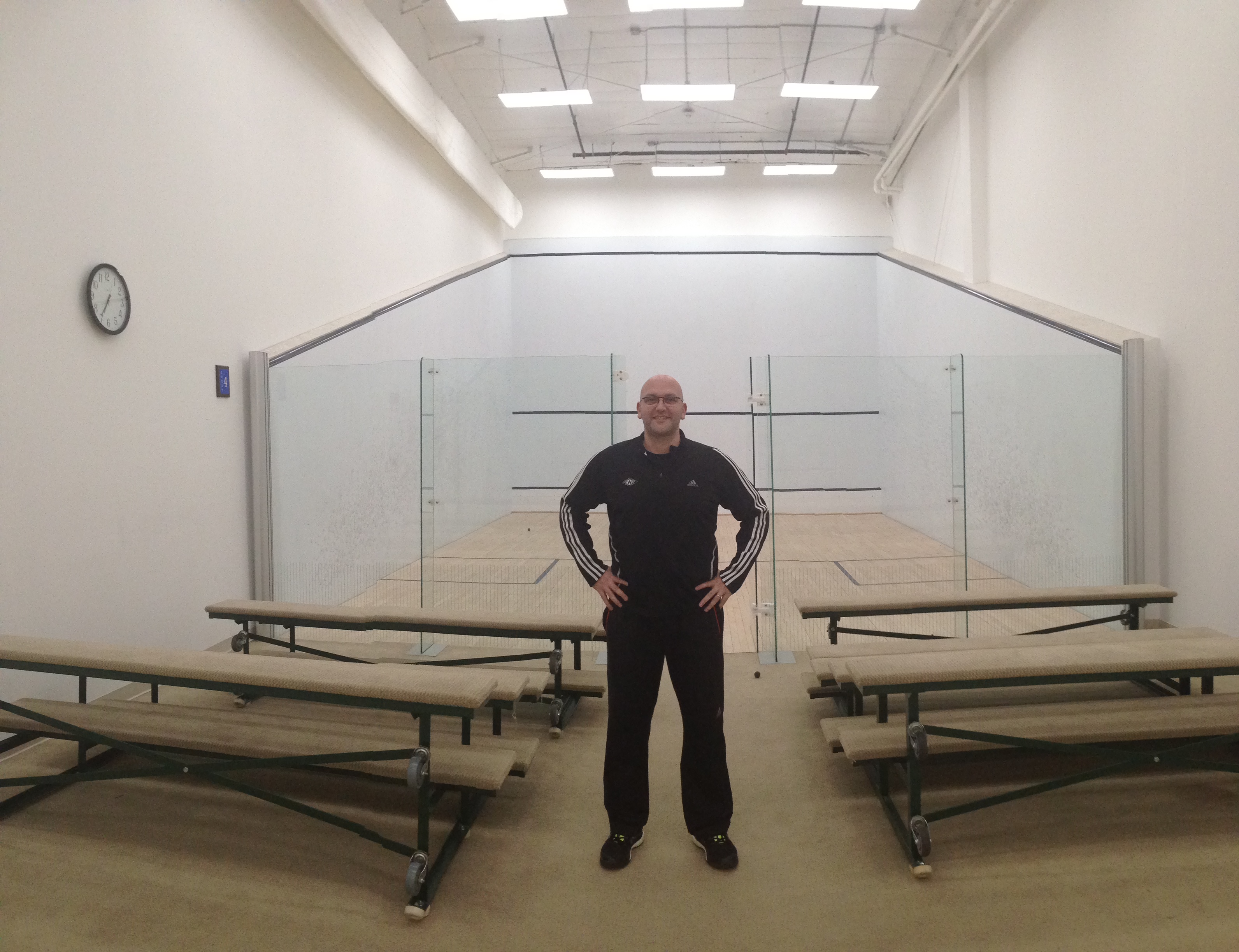Lighting the Way: A New Solution for Squash Court Lights
By James Zug
 It started about seven years ago when Lee Witham and his wife Jihyeong (everyone calls her JiJi) decided to build a weekend home in upstate New York. Working early from scratch, they ambitiously decided to build a net-zero energy house. It wasn’t painful. Witham loved researching and learning about geothermal heating and cooling, radiant floors, solar. One environmentally-friendly aspect that particularly intrigued him was lighting.
It started about seven years ago when Lee Witham and his wife Jihyeong (everyone calls her JiJi) decided to build a weekend home in upstate New York. Working early from scratch, they ambitiously decided to build a net-zero energy house. It wasn’t painful. Witham loved researching and learning about geothermal heating and cooling, radiant floors, solar. One environmentally-friendly aspect that particularly intrigued him was lighting.
For most people, the thinking ends when the house gets finished. For Witham, it only deepened: he has started a lighting company.
Witham is not an ordinary teaching professional. Now forty-seven, he grew up in England and reached world No. 48. In the 1990s, after stints in Germany and Malta, he moved to the States to work as a teaching pro, first at the Princeton Club of New York, then in the Hamptons. Almost ten years ago he joined Westchester Country Club, where he has created a burgeoning junior program and hosted many events.
But squash alone has not been enough for the polymath Witham. Along with JiJi, a fashion designer who used to live in Italy, he got into the New York wholesale and retail flowers business. They ran flower shops including Doro’s Annex in Chelsea, as well as Orchid Man and JiJi Floral Design. They had accounts with Saks Fifth Avenue and Lord & Taylor. To juggle flowers and squash, Witham worked on the flower business from dawn until midday and then taught at the club in the afternoons and evenings.
First flowers, now lighting. Three years ago Witham bought an interest in a South Korean manufacturing plant specializing in street and office lighting (JiJi is originally from Korea). He started lighting buildings—he has now lit more than a thirty offices around the country. In addition, he has lit garages, stairwells and yoga studios. The lighting is so good that one photographer had them installed in his studio so he could have daylight conditions twenty-four hours a day.
One niche has been schools with learning disabled and autistic students. Witham has done the human-centric lights, for instance, at the Center for Discovery, the well-known school in Harris, New York. Witham introduced a round light, which is more accepted by children with autism and he was able to adjust the light temperature, either a blue white light that limits melatonin and stimulates energy (useful for a hospital during a night shift) or an orange/red light that introduces melatonin and relaxes the body. “Based on the activity level of the class,” Witham said, “the teacher can adjust the light temperature to calm or energize the students.”
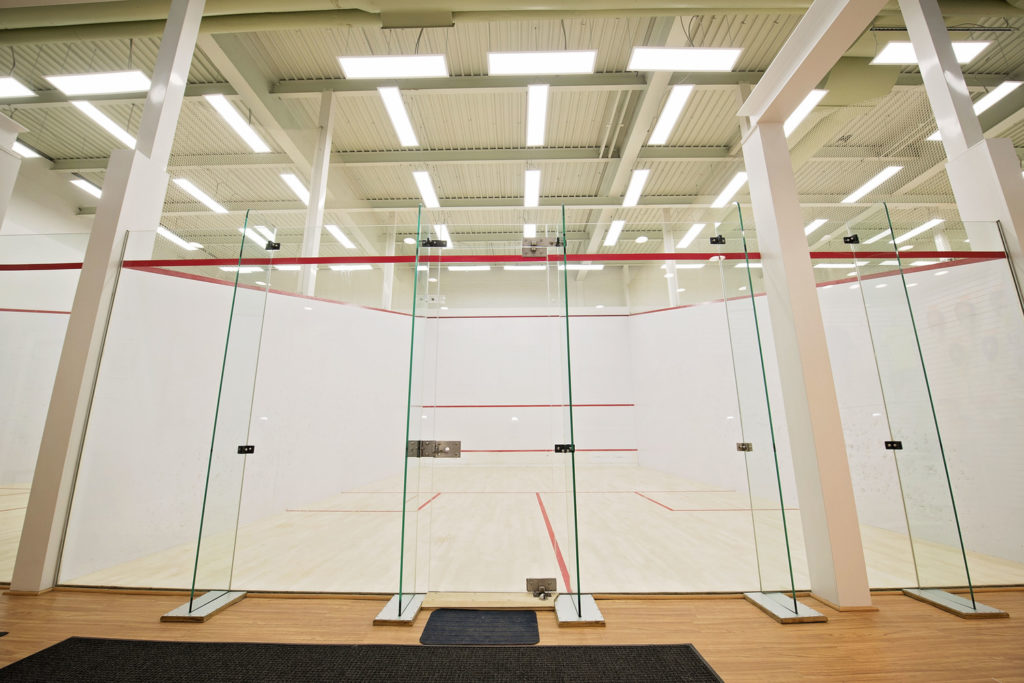
Unable to unite squash and flowers, Witham is now combining squash and lighting. Most squash courts in the U.S. are lit with fluorescent fixtures. A typical fluorescent bulb is 200 watts, while a LED (light emitting diode) bulb consumes 50 watts yet produces the same amount of light. Witham estimates that all the squash courts in America use a total of 6.3 million watts of energy a year. If everyone switched to LED lights, there would be an annual half million dollars in savings. “I’ve learned that LED lighting is the easiest thing to make a large impact in saving energy and producing a better-quality light experience for squash clubs,” said Witham.
The quality of the lighting experience is as obvious as the savings. Witham has created a flat panel for squash courts—there is no actual bulb—and it provides an even light without excessive shadows. “You can stare at the lights,” Witham said. “No need to be afraid of looking for a high lob. And there is no glare. The light is uniform and white, not yellow.”
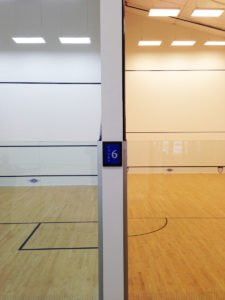 The environmental benefits of LED lights are plentiful: they don’t contain mercury, have longer life cycles than fluorescents and do not produce infrared, ultraviolent radiation or much heat. Most states offer rebates for businesses putting in LED lighting. “Because of rebates, in some states the cost can drop to 50%,” Witham said.
The environmental benefits of LED lights are plentiful: they don’t contain mercury, have longer life cycles than fluorescents and do not produce infrared, ultraviolent radiation or much heat. Most states offer rebates for businesses putting in LED lighting. “Because of rebates, in some states the cost can drop to 50%,” Witham said.
Court builders and many clubs and schools around the country have used Witham’s company, including his first installation at Westchester Country Club. “Westchester is normally not an early adopter,” Witham said, “And I was nervous to put them in at my own club and it not work right. Instead it has been fantastic. I’ve gone on to do Westchester’s paddle courts and golf storage facility. The members love the quality of light and the business manager loves the savings.“
Witham has also begun to sponsor professional players: he has signed up Chris Binnie, Kanzy Defrawy, Chris Hanson and Vikram Malhotra. All are funded by LED Squash lighting revenue.
Squash Pros Making a Racquet
By Georgetta Lordi Morque
One Sport
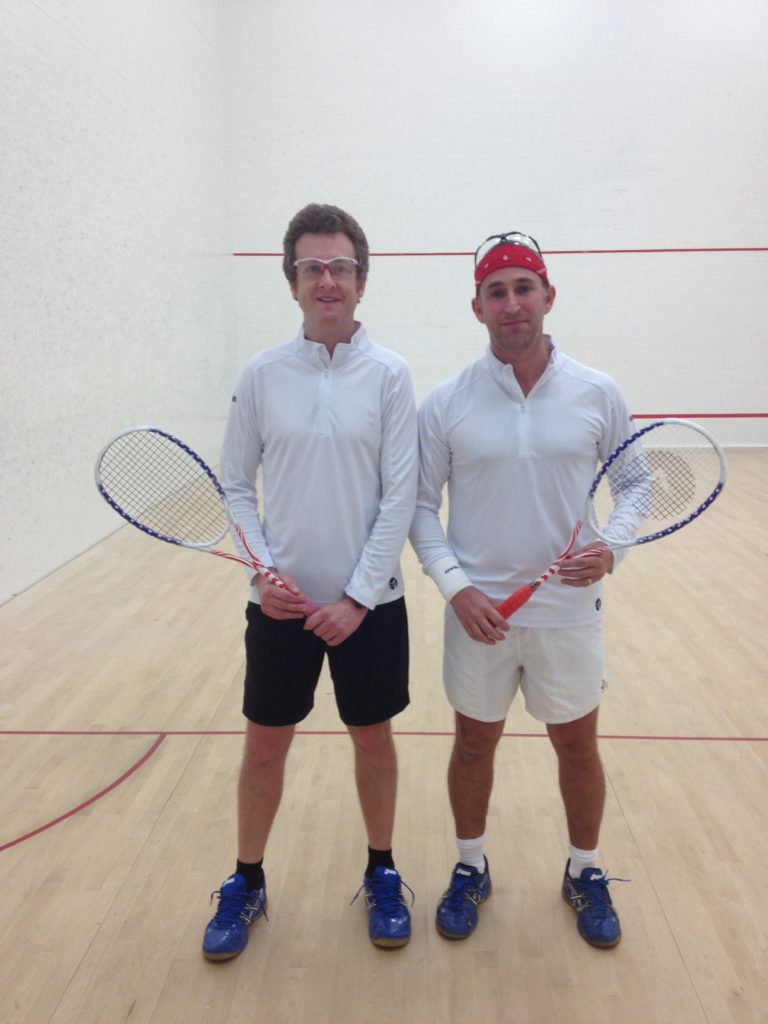 The idea came on a squash court, naturally. Four years ago Mike Puertas, athletic director and head squash pro at the Racquet Club of St. Louis, and Scott Denne, head pro at the Buffalo Tennis and Squash Club, first tossed around the idea of creating a new racquet company while having a hit.
The idea came on a squash court, naturally. Four years ago Mike Puertas, athletic director and head squash pro at the Racquet Club of St. Louis, and Scott Denne, head pro at the Buffalo Tennis and Squash Club, first tossed around the idea of creating a new racquet company while having a hit.
Six months later, One Sport was born.
“We felt we could do as good or better with customer service and pricing,” Puertas said, “creating a high-quality yet affordable racquet.”
Interestingly, Puertas, a native of England who reached world No. 38 and won the 1996 Albuquerque Open, and Denne, an Aussie who reached world No. 169, came up with a very American racquet. One Sport has three models, all with a patriotic design of red, white and blue stars and stripes: the Adams, with its oval-shaped head and neutral balance, appropriate for singles or doubles; the Washington, with its rounded head favored by doubles players; and the Jefferson, the lightest of the three with longer main strings and a stiff and reliable frame for singles.
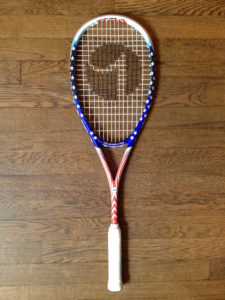 The partners went through several brainstorming sessions with a St. Louis designer. Puertas also used the players at Washington University where he coaches, as a sounding board.
The partners went through several brainstorming sessions with a St. Louis designer. Puertas also used the players at Washington University where he coaches, as a sounding board.
After their research determined that China dominates the market for racquet production – including squash—the partners tried two factories there before settling on the one they currently use. “We are confident with the product we offer,” said Puertas. “Our goal is to be honest and true, and make it more affordable. Our focus is on a small range of racquets and growing our custom business.”
One Sport has carved out a niche in custom service. Over fifty clubs have ordered specialized racquets. Everything from the weight and balance, to the cosmetics, is tailor-made. For the 2020 Olympics squash bid, One Sport designed a limited edition, “I BACKED THE BID”, racquet and donated $80 from each sale to the US Squash Olympic Fund. In terms of marketing, Denne and Puertas rely on a large network of players and coaches developed over the years. “Down the road we hope to expose the brand through player sponsorships,” noted Puertas.
As for the competition in the squash racquets industry, Puertas acknowledges that they are challenging giants. “We’re happy to compete. It’s a neutral playground.”
MOR Squash
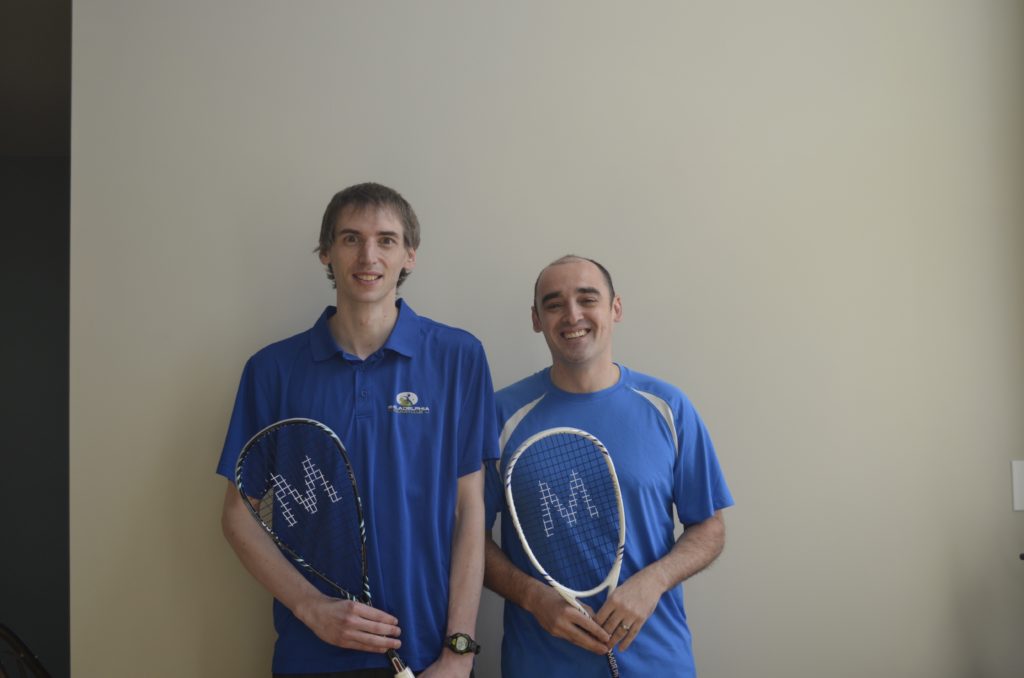
Having a racquet company has been a childhood dream for Gavin Jones, director of squash at Franklin & Marshall College. It’s something he talked about for years that finally came to fruition just under three years ago when he partnered with Ron Koenig, a pro at the Philadelphia Squash Club, to form MOR Squash.
A Welshman, Jones reached world No. 37 and won two pro titles, including the Baltimore Open. German-born Koenig has coached at Berwyn Squash and Malvern Prep before going to PSC. Like Denne and Puertas, Jones and Koenig saw a market for a more affordable racquet of high quality. “We wanted to have a product out there that anyone can buy,” Jones said.
After investigating carbon-fiber companies in the U.S., MOR Squash also ended up looking at racquet manufacturers in China. They chose a Chinese company that Jones said has been very responsive, knowledgeable and personally helpful. Jones often engaged the F&M team to test out prototype MOR Squash racquets and provide feedback.
MOR stands for Masters of Reality. “You become a master of reality when you step on the squash court and close the door behind you,” explained Jones. The brand’s three models incorporate the MOR name. The MORtal is tear-shaped with a high sweet spot and a built-in vibration damper; the MORph is 125 grams and head light; and the ImMORtal, with a larger head, stiffer frame and simplified-stringing pattern. MOR Squash said it is “a racquet that just shouldn’t be allowed.”
The racquets have all the qualities that Jones values: evenly balanced, head-light and able to generate power while maintaining control. They also wanted to create something unique that would stand out, like the newly professionally redesigned MORph, which is carbon black with splashes of yellow in a matt finish. “We wouldn’t sell anything we wouldn’t use ourselves,” Jones said.
To generate more exposure, MOR Squash is now sponsoring its first player, Adam Perkiomaki. A Portland native, Perkiomaki was an All-American at University of Rochester and is now back serving as an assistant coach at his alma mater.


